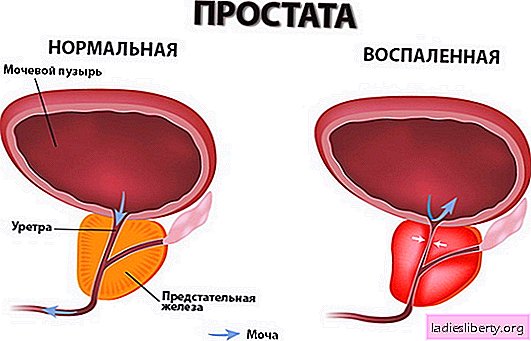
People who often consume ultra-processed foods are at an increased risk of death. The results of a major study were published in JAMA InternalMedicine.
What is an ultra-processed product?
The term "ultra-processed" was introduced by the Global Group on Agriculture and Food Nutrition. The UN expert group identifies 4 food categories in the NOVA classification.
First two categories - minimum processed and unprocessed products, in which neither salt, nor sugar, nor fats are added. Soups and broths, bread, salads, drinks and desserts are products from the first and second categories.
Third category includes processed foods - simple canned food with vegetables, fruits, fish or meat, to which preservatives are added to extend shelf life.
"Ultra-processed" food products - 4 categories - additionally contain colorants and flavors that enhance nutritional pleasure.
They often contain refined sugars and fats, as well as salt, which increase appetite.
List of the most dangerous "ultra-processed" products:
- snacks
- ice cream;
- sugar-containing drinks;
- chocolate;
- candies;
French fries; - hamburgers and hot dogs;
- nuggets.
How many consume such products and what risks do they bear for health?
“Ultra-processed” foods account for 14.4% by weight of food consumed among 44 551 adults over 45 years of age. Since May 2009, adults have been asked about their eating habits as part of an online study. They completed 5 questionnaires in everyday life and conducted a 24-hour nutritional protocol every 6 months.
Epidemiologist Lor Schnabel of the Sorbonne University of Paris studied the fate of the death register. During the 7.1-year follow-up, 602 participants died (1.4%), including patients with high consumption of ultra-processed foods.
According to Schnabel, an increase in the proportion of "ultra-processed" foods by 10% was associated with an increased risk of death by 14%. Researchers have taken into account a number of potential factors that also influence the risk of death.
In addition to age and gender, specialists took into account monthly income and education, marital status and place of residence, physical activity, as well as smoking. Scientists have included a family risk of developing cancer and cardiovascular disease.
In epidemiological studies, there is no guarantee that other characteristics of participants do not explain the increase in mortality. Even a “reverse causal relationship” is possible; people who are terminally ill prefer to use "ultra-processed" foods.
What substances do processed foods contain?
If the results of the study are correct, then only the features of "ultra-processed" foods explain the increased risk of death. Potentially hazardous substances are acrylamides, which are produced by intensive heating of starchy products in the Maillard reaction.
Ultra-processed foods often contain a white pigment called titanium dioxide. It is believed to cause chronic inflammatory bowel disease.
Emulsifiers and artificial sweeteners contained in finished products damage the intestinal flora and contribute to the development of type 2 diabetes.
The packaging components are endocrine disruptors that upset hormonal balance and therefore metabolism. NOVA classification is a controversial new method for nutritionists. It does not take into account the levels of carbohydrates, fats and proteins, which served as the basis for nutritional recommendations.
Products of the same composition may belong to different categories. Homemade cookies can be classified as "processed culinary ingredients." The same cookies from the supermarket will be "ultra-processed" products.
Doctors recommend abandoning excessively processed foods and prefer healthy foods. From time to time it is not forbidden to use such products, but it is recommended to reduce their weekly amount.











